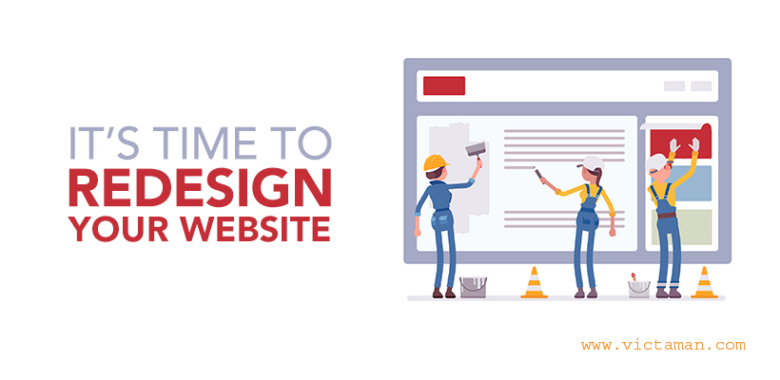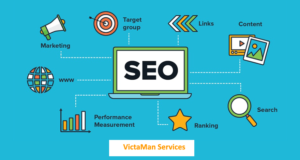With the digital marketing space moving at a rapid pace, having an outdated website can have a negative impact on your business. Two questions we often hear from businesses we consult with about digital strategy are, “Do I need a website redesign to compete or rank better?” or, if we recommend a redesign, “Why do I need to redesign my website?”
These questions usually arise if the business is changing their branding or is having trouble ranking in Google, but there are many other reasons that a website redesign or revamp may be needed.
The reasons below vary in severity and, depending on which reason is identified, determines if your website just needs a quick design and structure update or a full redesign, build, and CMS migration.
Your Target Audience Changed
Maybe you were targeting a certain demographic or user group, and, with the release of a new product or service, you’re shifting your target personas or market strategy.
Each type of user that your website is targeting may have specific needs. Thus, a website redesign may need to take place to align your website with the expectations of your new user groups. This can include realigning expectations about the following:
- The words used to describe your products or services
- How your website is organized
- What content they expect to find on your product or service pages
- The design elements and functionality of your website
Missing or Updating Brand Messaging
It’s important to present a unified, clear, and consistent brand message throughout your website. This means your slogans, tag lines, brand voice, value proposition, and mission statement are all important factors when determining how well your website reflects your brand and your business.
If your website is missing these core branding elements or they are being updated, it might make sense to redesign your website to align with the improve messaging. Saurav Kumar, CEO of Victaman Services Pvt. Ltd., a Bangalore Based Web Design Company
Your Website’s Purpose Was Updated
If your site’s purpose or goals have changed, then it may require a website overhaul. For example, if your new goals are to provide more lead generation content, you may need to restructure pages to drive more leads; or if you’ve recently added a shopping cart to your website, you may need to update its layout to be more in line with other eCommerce websites.
While you clearly don’t need to do a full site redesign each time you adjust your marketing goals or messaging, it’s a good idea to check every so often to be sure your site is still aligned with your newest marketing plans.
Your Clients or Users Are Complaining
Working closely with your customer service team is a great way to identify issues with your current website. Your website design and content strategy needs to be addressed if your customer service team is getting calls that include people saying some of the things listed below:
- I cant find you online.
- Your website is not usable on a mobile device.
- I am having trouble checking out and buying your product.
- Do you offer product “x” or service “y”?
- Where is your business located?
- Where can I buy your product?
Industry-Specific Design Trends Changed
Is your website keeping up with design trends? With industry-specific web design trends changing every few years, a website that is two or three years old will seem outdated when compared to a competitor who has a website that is up to date with the latest design trends.
By no means are we saying that you need chase the newest website design trends like flat design. When trying to determine if a redesign due to a design trend is worthwhile, ask yourself two important questions:
- Will changing our website design be beneficial to how our brand is perceived?
- Are our competitors taking advantage of these new trends?
Your Website Looks Untrustworthy or Outdated
Whether you believe it or not, approximately 75% of people will judge the credibility of your business based solely on the design of your website.
In 1999 Jakob Nielsen identified four ways in which a website can communicate trustworthiness:
- Design quality
- Up-front disclosure
- Comprehensive and current content
- Connection to the rest of the web
In a recent study by the Nielsen Normal Group, they observed that the very same factors that Jakob Nielsen identified in 1999 continue to influence users today.
Your Website Has a Bad Foundation
If you have to spend more money putting bandaids on problems than actually building new means for functionality and content, then you most likely have foundational issues that in the long run will cost you more than if you just built a new website.
Foundational Issue #1: Your Website Isn’t Optimized for Speed
Did you know that 47% of consumers expect a website to load in less than two seconds, and 40% will abandon a website if it takes longer than three seconds to load. Google has also built website speed into their algorithm to reward websites that load quickly.
Two of our favorite tools for analyzing page speed are Google Page Speed Tool and Pingdom Tools. These tools report on a multitude of factors that negatively impact speed, all of which are usually the result of one or more of the following website issues:
- Server Resources – Many website owners think that all hosting is created equal, and they can use a cheap hosting company; don’t. If you’re building your website in WordPress, we recommend using either WPengine or MediaTemple. We’ve used them both and are big fans.
- Bad Code – Many times businesses will outsource their development to the lowest bidder. This usually results in poorly developed code (among other things.)
- Unnecessary Javascripts – The problem with many WordPress themes is their code includes many scripts that are not used or needed. These scripts are loaded on every page – even when they are not in use – causing the page to load slowly.
- Image Size – Optimizing images for the web can have a big impact on page load speed. If you are using WordPress, there are plugins to help you manage image size. These include plugins such as WP Smush, Kraken Image Optimizer, and ShortPixel Image Optimizer.
Foundational Issue #2: Your CMS Isn’t SEO Friendly
Even with the importance of traffic from Google, we are shocked that all Content Management Systems don’t give their users the ability to optimize their websites for the search engines.
We’ve done website audits for many big companies. When we talk to the CMS vendor about implementation processes, we are shocked to find that we are unable to implement even basic SEO elements, such as canonical tags, unique title tags, or H1 tags. If Google traffic is important to your website, and your current CMS is not SEO friendly, we recommend cutting ties with it and rebuilding your website in a CMS that has best-in-class SEO built into it’s functionality. Saurav Kumar, Victaman Services Pvt. Ltd.
Foundational Issue #3: Your Website Isn’t Responsive
According to Google, 61% of users are unlikely to return to a website that doesn’t work well on mobile, with 40% visiting a competitor’s website instead.
If your site isn’t responsive yet, the chance you’re losing leads and customers is high. Mobile users have made it clear they want to have a great UX when viewing your website on their phones and tablets.
Foundational Issue #4: Your Website Is Difficult to Use
Website usability does not just positively or negatively impact your users; it can have positive and negative impacts on the management of your website too. The time it takes you to update your website or the money it costs to pay someone to update it adds up over time and can cost more than if you’d just redesigned it from the start.
Foundational Issue #5: It’s Difficult to Add Functionality
Well-thought-out functionality should be a focus for your business. If it’s not, your organic traffic and lead generation efforts could suffer.
If your site is like most out there, you’ve embedded third-party widgets and tools such as shopping cart widgets, email marketing forms, or landing page tools. But if you can’t easily add them or have to pay someone to create custom functionality, then it may make more sense to redesign your website.
Foundational Issue #6: Your Website Has a Poor User Experience
This might seem obvious, but you’ve probably visited a website that frustrates you – to put it lightly – when you’re trying to use it.
Providing a great user experience means that you’re providing the user with a great overall experience from the first time they visit your website through the conversion. Providing a great website experience involves a couple overarching methodologies:
User interface (UI) Design – Having a great user interface means that your visual representation across devices is intuitive, consistent, and aligns with your user’s expectations.
Information Architecture (IA) Strategy – Having a great information architecture means that the organization of your website aligns with the expectation of your users.
Getting these two things correct could mean the difference between someone staying on your site and converting or getting frustrated and leaving to go to a competitor’s site.
Your Competitor’s Website Makes You Jealous
Obviously you don’t need to redesign your website every time one of your competitors changes theirs. But it’s important to note that your business does not live inside a bubble online, so if your website is not in line with the quality of your competitors, you’re most likely losing sales to them.
Their SEO Is Better
Maintaining an edge in search shouldn’t be your only goal, but if you’re searching for your products or services and aren’t near the top of the search results, you may need to adjust your website strategy to compete. This could involve a redesign.
They Have Better Functionality and Content
If you spend some time on a competitor’s site and realize its functionality and content meets your goals far better than your own site does, it’s time to find an agency that can build you a website that meets your user’s needs.
Their Design Is Better
If you visit your competitors website and wish it was yours, you probably need to redesign your website. Now that does not mean copying your competitors design, but it does mean creating a website that you can be proud of.
What’s Next
Your website could be beautiful, functional, and pixel-perfect, but if you still aren’t getting the results you want, it’s not doing the job it was intended for. Your website exists to build your brand, market your business, and ultimately increase sales. If you aren’t happy with your results, it’s time to think about a redesign.
Thanks for reading “The Real Reasons Your Website Needs a Redesign”, by the Victaman Team




Comments
Valuable info. Lucky me I found your web site by accident, and I am shocked why this accident didn’t happened earlier! I bookmarked it.
Author
Thanks for your feedback. Keep visiting Us.
Great content! Super high-quality! Keep it up! 🙂
Author
Thanks for your feedback. Keep visiting Us.